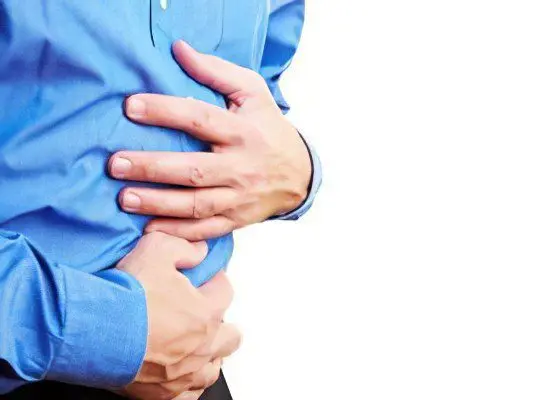
The stomach is an important organ that provides digestion of food with the help of digestive juices. It is located in the upper left side of the peritoneum. Its shape and size change depending on the amount of food consumed. Outwardly, the stomach resembles a bag, the anatomical dimensions are 21-25 cm, the capacity is 3 liters.
A healthy person is not worried about problems associated with heartburn, nausea, problems, and if such symptoms appear regularly, then you need to seek help from a doctor.
One of the very complex diseases is necrosis that occurs with burns with caustic substances, with acute expansion of the stomach, infringement of a diaphragmatic hernia or hiatal hernia, volvulus, phlegmon, and many other causes.
Despite the relative rarity of this pathology, in medicine there are enough diagnostic methods and methods of surgical tactics. Necrosis is always a severe, progressive course of the pathological process. In most cases, necrosis leads to severe complications. Extremely rare idiopathic necrosis of the stomach is complicated by perforation and peritonitis.
Basically, such lesions occur in newborns, they are caused by perinatal distress and intrauterine asphyxia. Necrosis of the stomach wall develops after surgery, this is also a rare phenomenon, which manifests itself after a few days with severe pain in the epigastrium. A complication can lead to perforation into the abdominal cavity and the formation of an external gastric fistula and necrotic ulcers.
Early diagnosis of necrosis and emergency surgical measures can prevent death. There are many dangers causing changes inside the stomach. So, for example, necrotic gastritis occurs only when alkalis, acids and other chemicals enter the stomach, burning and destroying the mucous membrane. Necrotic foci can cover the superficial and deep sections of the mucosa of the organ.
Necrosis is coagulative, when protein coagulation processes are observed with the formation of practically insoluble compounds, or coagulation, accompanied by the melting of dead tissue. Necrotic changes usually develop to the formation of erosions and acute ulcers, contributing to the appearance of phlegmon and perforation of the stomach.
Destructive changes end with the development of atrophy of the mucous membrane and sclerotic deformation of the stomach wall, i.e., cirrhosis. With gastric ulcer erosion, practically do not heal. Gastric juice promotes the spread of necrosis to all layers of the stomach wall, erosion is converted into an acute peptic ulcer.
With an exacerbation of peptic ulcer, a purulent-necrotic exudate is formed in the middle of the ulcer, and fibrinoid necrosis can be detected in the scar tissue surrounding it and in the sclerotic walls of blood vessels. With the increasing development of necrosis, the ulcer becomes deep and wide. Fibrinoid necrosis of the gastric vessels leads to their rupture and, consequently, to bleeding.
On necrotic areas, granulation tissue gradually appears, quickly turning into a state of rough connective tissue with very dense edges. Always the basis of the changes that appear in the focus of necrosis is the extinction of the synthesis of structures, the formation of new tissues, hormones and enzymes necessary for life and the increase in decay reactions. This disrupts the function of respiration and the loss of one of the most important components of cellular respiration, which contributes to the production of energy in the form of ATP.
Denaturation, protein coagulation, loss of glycogen, destruction of cellular structures and subsequent destruction of decay products are processes that occur during tissue damage by necrosis. Necrosis affects the tissues of the stomach during the growth of cancerous tumors. The reason for this is a violation of innervation in the affected areas, normal blood supply and cell nutrition. As a result, the mucous membrane dies, and then the muscle layers of the stomach.
After resections of the stomach for duodenal ulcer or after extensive subtotal resections for cancer, a rather rare complication may develop – necrosis of the stomach stump. It is formed due to a violation of the blood supply in the stump. During the operation, it is necessary to seek the possibility of preserving one of the arteries of the ascending branch of the left gastric artery, short gastric vessels, or the right inferior phrenic artery.
Prognosis for patients with a diagnosis of “necrosis of the stomach stump» unfavorable and often fatal. In such cases, total gastrectomy or resection of the necrotic stump is recommended. The esophagus and jejunum must be connected using an anastomosis (artificial connection).









